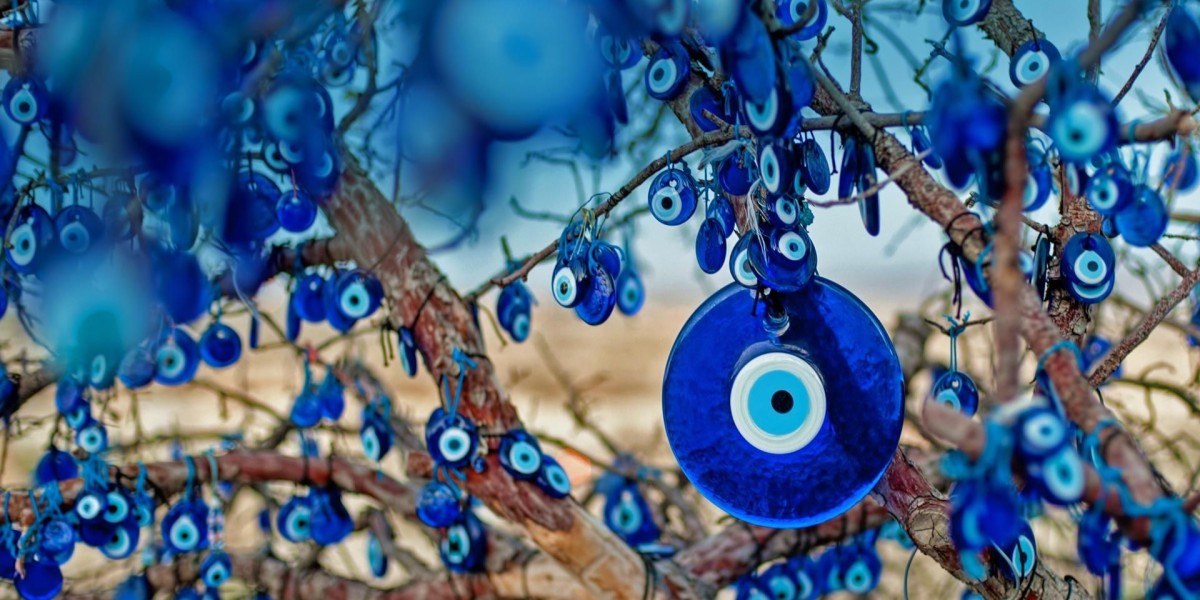Historical Origins of the Greek Evil Eye
The concept of the evil eye is ancient, with references found in various religious texts, folklore, and mythologies. In Greece, the belief dates back to classical antiquity, where it was a common theme in the works of poets and philosophers like Hesiod and Plutarch. The evil eye was believed to be responsible for misfortune, illness, and even death. It was seen as a supernatural force that could cause harm simply through envy or jealousy.
In ancient Greece, people were particularly concerned about the power of the evil eye during celebrations and moments of success, where they were most vulnerable to envy. As a result, they developed various symbols and rituals to protect themselves, the most prominent of which was the use of apotropaic symbols—objects designed to ward off evil spirits, including the evil eye.
Symbolism and Meaning of the Evil Eye in Greek Culture
The evil eye in Greek culture is not just a superstition but a deeply ingrained belief that has shaped many customs and traditions. The eye symbol, typically depicted in shades of blue or green, is one of the most recognizable symbols used to ward off the evil eye. The blue eye is particularly significant, as it is believed that those with blue eyes are more likely to cast the evil eye, and therefore, a blue eye charm is used to protect against it.
The symbolism of the eye relates to vision and perception, suggesting that the gaze has the power to influence reality. The evil eye is thought to work through the transfer of negative energy from one person to another, usually out of envy. This energy can cause various types of harm, from physical illness to bad luck in everyday life.
How to Protect Against the Evil Eye
Protection against the evil eye in Greek culture involves several rituals and the use of specific charms. The most common protective symbol is the mati, an eye-shaped amulet that is often worn as jewelry or hung in homes and cars. These charms are believed to reflect the gaze of the evil eye back onto the person who cast it, thus neutralizing its power.
1. Wearing the Mati Amulet
The mati is the most popular form of protection against the evil eye. It is typically worn as a bracelet, necklace, or ring, but it can also be found as wall hangings or keychains. The belief is that the mati acts as a shield, deflecting negative energy and keeping the wearer safe from harm. These amulets are often given as gifts, especially to newborns and newlyweds, who are considered particularly vulnerable to the evil eye.
2. Performing Rituals and Prayers
In addition to wearing amulets, certain rituals and prayers are believed to offer protection against the evil eye. One such ritual involves the recitation of a special prayer known as the xematiasma, which is usually performed by a priest or an elder in the family. This prayer is said to break the curse of the evil eye and restore the affected person’s well-being.
Another common practice is the use of blessed water or oil. In this ritual, a few drops of holy water or oil are sprinkled over the affected person while prayers are recited. This is believed to cleanse the individual of any negative energy and protect them from future harm.
3. Using Other Protective Symbols
Aside from the mati, other symbols and objects are used to guard against the evil eye. These include:
- The Cross: Wearing a cross or having one in the home is believed to provide spiritual protection.
- Garlic: Hanging garlic in the home or carrying a clove with you is thought to ward off evil spirits.
- Red String: Tying a red string around the wrist is another common practice believed to offer protection from the evil eye.
Modern Interpretations and Cultural Significance
In modern times, the belief in the evil eye remains strong in Greece and among the Greek diaspora. While some may view it as a superstition, for many, it is an important part of their cultural heritage. The mati symbol has also gained popularity beyond Greek culture, becoming a fashionable accessory and a symbol of protection worldwide.
The evil eye has even found its way into contemporary art and design, where it is often used as a motif in jewelry, clothing, and home décor. This has helped to keep the tradition alive and relevant in the modern world, bridging the gap between ancient beliefs and contemporary practices.
Conclusion
The Greek Evil Eye is more than just a myth; it is a powerful symbol of protection and cultural identity. Its deep roots in Greek history and tradition continue to influence the lives of many today. Whether viewed as a spiritual safeguard or a cultural relic, the evil eye remains an enduring symbol of the human desire to protect oneself from harm and negative energy.









